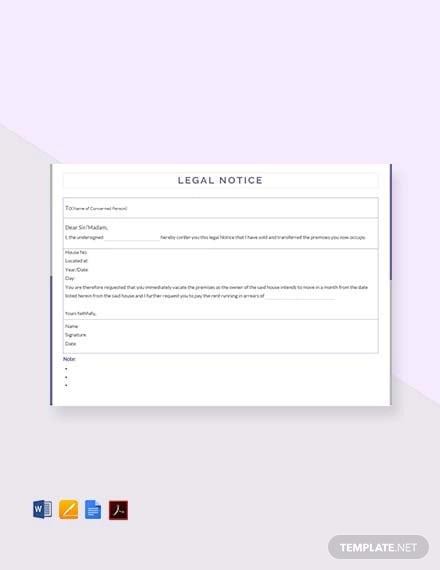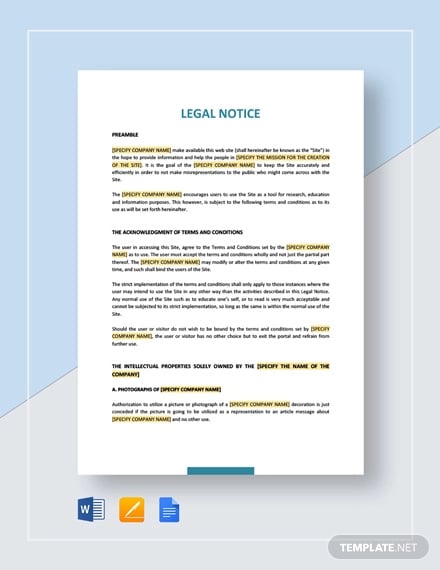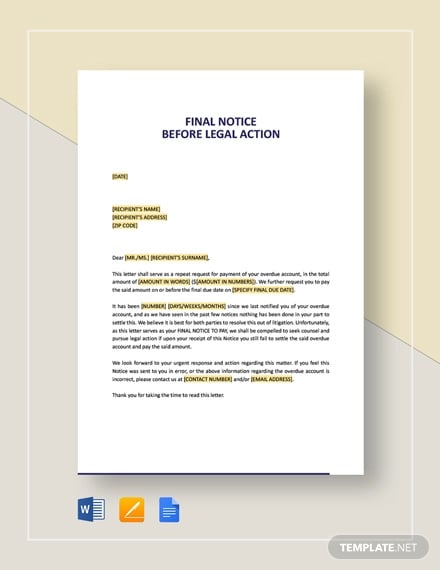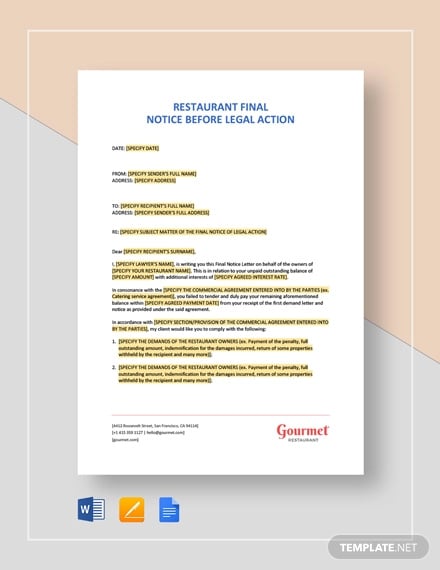15+ Legal Notice Templates in MS Word | Pages | Google Docs | PDF
A legal notice helps any legal procedure or lawsuit. The letter may notify about a court notice, recovery of money, property transaction, credit card demand, divorce, and more. Drafting the letter content, court concerns, payment, and more may take time. It gets even more complicated when you include the Word document format, even for an experienced writer or advocate. Make sure the content is within the law, copyright, and consumer contract with the legal notice templates.
The premade format and content make it easier for a lawyer and anyone to write this legal document. We also created a simple list of legal templates about a job recovery, tenant eviction by landlord, attorney meeting, and various reasons.
15+ Legal Notice Templates
Free Legal notice Template
Notice Template Bundle
Legal Notice Sample
Legal Notice Example
Standard Legal Notice Template
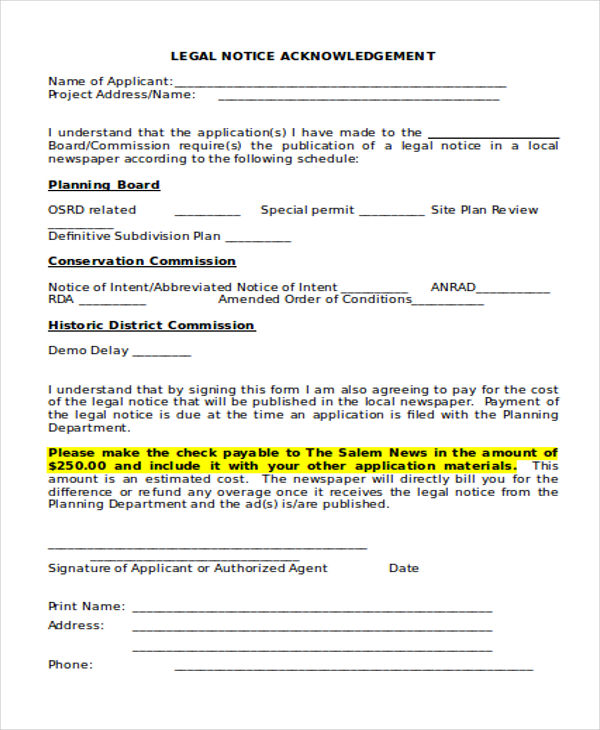 beverlyma.gov
beverlyma.govLegal Notice Draft PDF
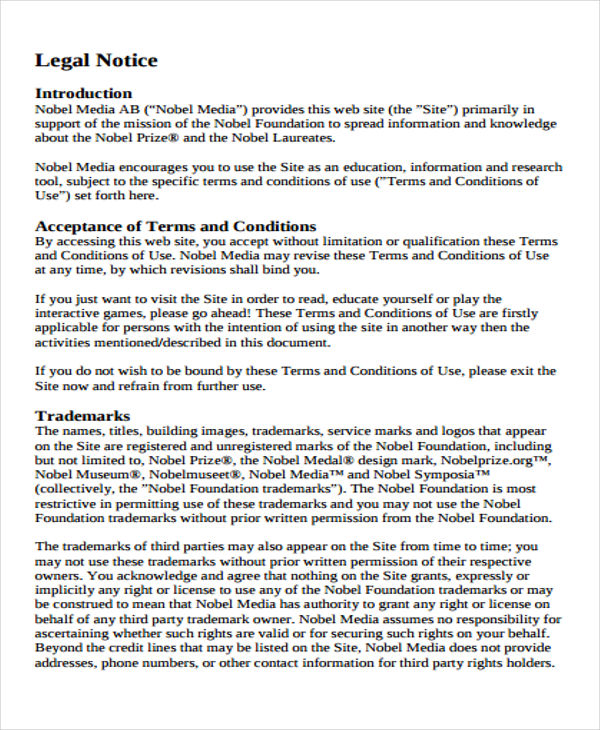 nobelprize.org
nobelprize.orgLegal Notice Template For Website
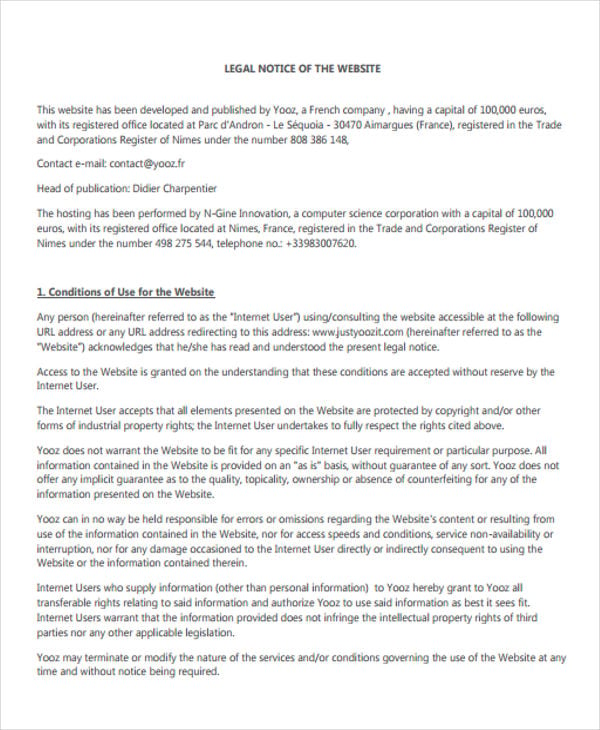 justyoozit.com
justyoozit.comExample Of Legal Notice
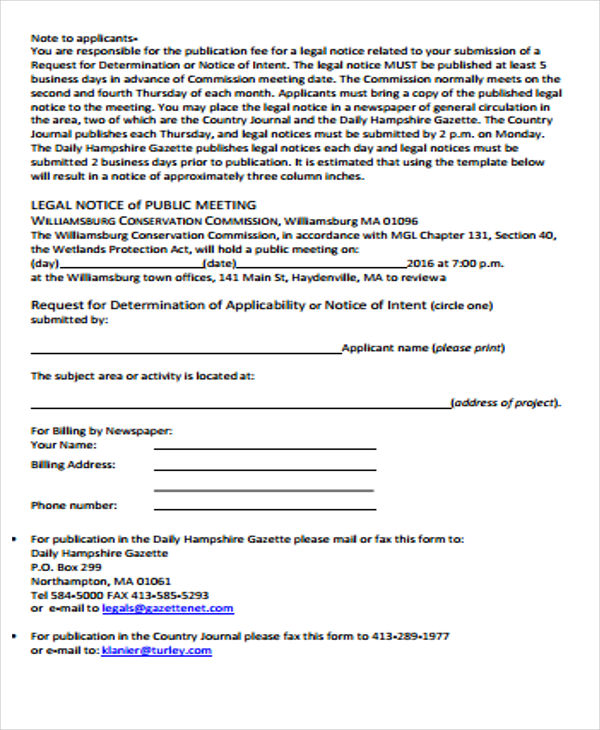 burgy.org
burgy.org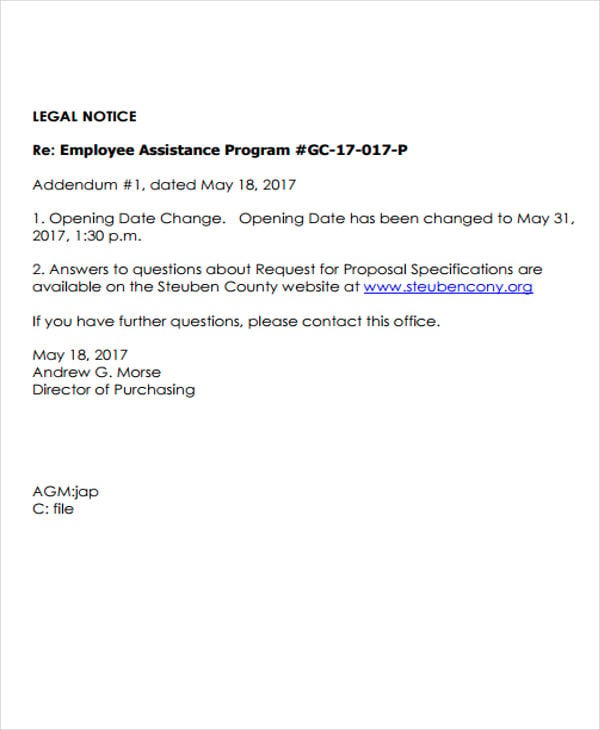 steubencony.org
steubencony.org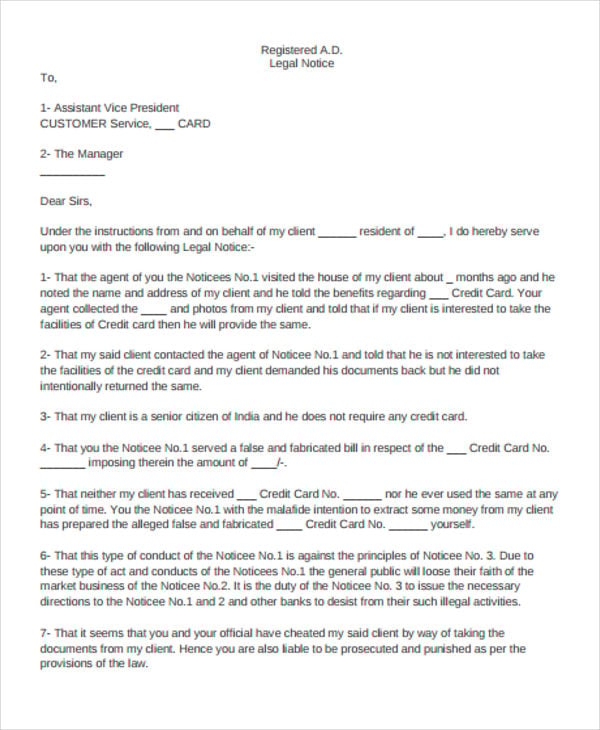 lawpandit.com
lawpandit.com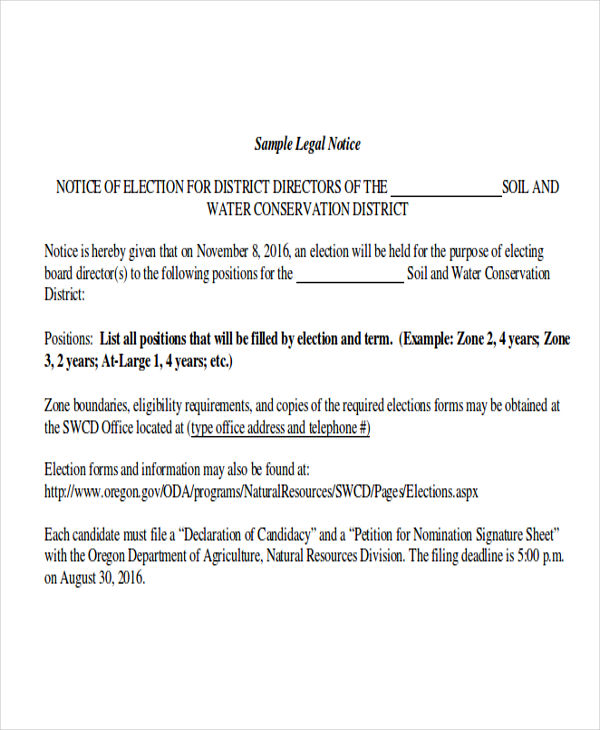 oregon.gov
oregon.govLegal Notice Model
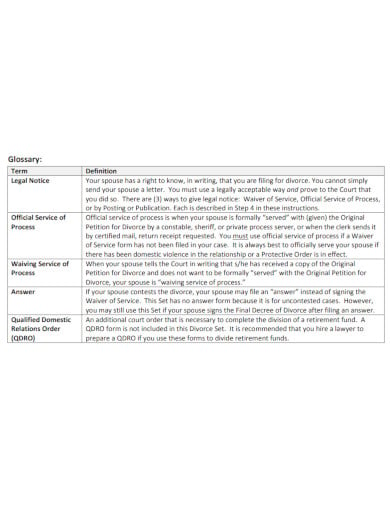 txcourts.gov
txcourts.gov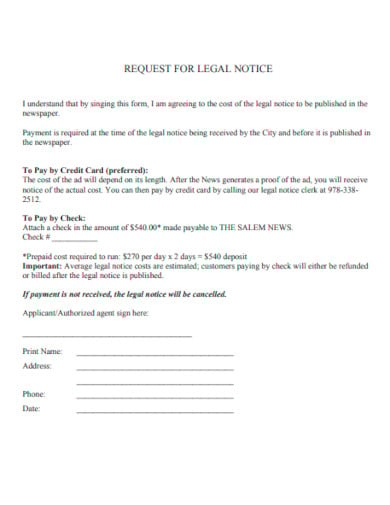 salem.com
salem.comLegal Notice For Recovery Of Money
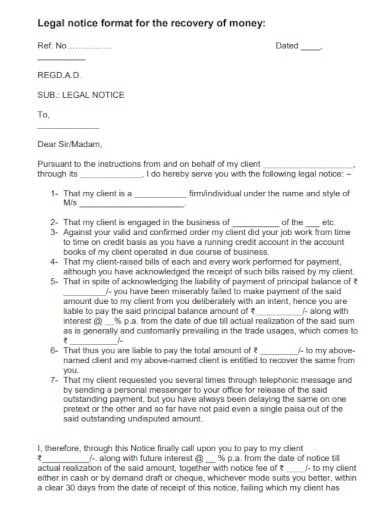 vakilsearch.com
vakilsearch.comLegal Notice Templates
Legal notice can be written for multiple purposes. It is a way of letting a party know about their actions and behaviors. If you are a landlord and have tenants who do not pay their rent on time, you may not want them to stay in your place. In such cases, you can issue a legal sample notice to the tenant(s) stating the reason(s). It will make them move out of your place effectively. If you are preparing a legal notice by yourself, you can check out Legal Warning Notice Templates available online. You can put the dates by which you want them to move out of the place completely.
Samples of Our Legal Notice Templates
We have these downloadable legal notice templates that are available for everyone. These include the notice to quit template for the very jaded employees as well as the employee warning notice that needs to be issued to misbehaving employees.
Other legal simple notice templates available on this site are as follows.
- Legal Notice Acknowledgement Template – This sample template is useful for serving a summon on a represented party that is known-to-be or otherwise, who is susceptible to such service. This contains vital details needed for a legal notice layout detailing the parties involved, the reasons for the issuance of a notice, as well as a section of acknowledgment.
- Website Notice Template – For a legal software notice that focuses on website matters, such as the condition of use of the website, what the IT software website is all about, who owns it, and the reason why the notice was given.
- Free Legal Template – If you’re looking for a legal notice that contains all relevant details and is available at absolutely no cost, then this formal template is what you need.
Importance of a Legal Notice
Legal notices are legal documents in PDF which are prepared and issued by an advocate and are requested by his or her client. Apart from being a legal document and is essential for legal matters, let’s also get to know the other reasons why a legal work notice is important.
- It is important since in most cases, the actual issue gets resolved by just receiving a legal notice. Let’s say a person with his or her hardships will narrate the issues to a certain advocate, his or her advocate will then draft those problems in an organized and presentable way.
- It is a major key in filing cases in the Honorable Courts, and it is also compulsory to send one to a receiver. The moment a legal notice format is served, there will be a duration time of thirty days for the receiver to respond to the legal notice. After the thirty days duration, the person with hardships will file a civil suit against the ones who receive the legal notice in Word.
These are what a legal notice can do, it is not just a mere notice document. It acts as a protective tool towards a person in a grievance. Now, talking about templates, something related to this topic is our two-week notice templates. If you’re looking for one, you might want to check the samples above.
More in Notice Templates
| 10+ Church Notice Templates in PDF | DOC | 11+ Maintenance Notice Templates in PDF |
| 4+ Payroll Notice Templates in PDF | 19+ Employee Warning Notice Templates in Google Docs | Word | Pages | PDF |
| 9+ Eviction Notice Templates in Google Docs | Word | Pages | PDF | 12+ Death Notice Templates in Google Docs | Word | Pages | PDF |
| How to Make/Create a Work Notice [Templates + Examples] 2023 | 8+ Payment Notice Templates |
| 10+ Eviction Notice Templates | 10+ Restaurant Notice Templates |
| 9+ Employee Notice Templates | 15+ Meeting Notice Templates in Google Docs | Word | Pages | PDF |
| 14+ Resignation Notice Templates in Google Docs | Pages | Word | PDF | 11+ Construction Notice Templates |
| 16+ Best Notice Letter Templates to Tenant from Landlord | 8+ Best 30-Day Notice to Tenants |
| 9+ Legal Notice Templates | 4+ Tenant 60-Day Notice to Vacate Templates |
| 10+ Notice to End Tenancy Templates | How to Write a Notice to Vacate Letter [10+ Best Templates] |
| 10+ Funeral Notice Templates in PDF | Word | Pages | 10+ Notice Templates in Word |
| 8+ Notice Templates in Google Docs | 10+ Simple Notice Templates |
| 12+ Simple Note Templates - PDF | 13+ 30-Day Notice Templates - Google Docs, MS Word, Apple Pages |
| 4+ Employment Notice Templates - Word, PDF | 7+ Employment Notice Templates - Google Docs, MS Word, Apple Pages, PDF |
| 26+ Sample Notice Templates - Google Docs, MS Word, Apple Pages, PDF | 9+ Rental Notice Templates - Samples, Examples |
| 11+ Cancellation Notice Templates - Word, PDF | 7+ Employee Warning Notice Templates - PDF, Google Docs, MS Word, Apple Pages |
| 9+ Abandonment Notice Templates - Samples, Examples | 7+ Layoff Notice Templates - Sample, Examples |
| 6+ Notice of Assessment Templates - Word, PDF | 8+ Adverse Action Notice Templates - Samples, Examples |
| 11+ Maintenance Notice Templates - Samples, Examples | 9+ Notice to Proceed Templates - Sample, Example |
| 6+ Rental Notice Templates - Word, PDF | 8+ Maintenance Notice Templates - Word, PDF |
| 10+ Separation Notice Templates - Google Docs, MS Word, Apple Pages, PDF | 7+ Abandonment Notice Templates - PDF |
| 5+ Staff Notice Templates - Word, PDF | 6+ Layoff Notice Templates - Word, PDF |
| 7+ Notice to Proceed Templates - Word, PDF | 7+ Detention Notice Templates - Sample, Examples |
| 18+ Legal Notice Templates - PDF, DOC | 8+ Demand Notice Templates - Sample, Example |
| 10+ Cancellation Notice Templates - Sample, Examples | 7+ Staff Notice Templates - Free Sample, Example Format Download |
| 5+ Demand Notice Templates - Word, PDF | 6+ Detention Notice Templates - Word, PDF |
| 35+ Notice Templates in PDF | 38+ Free Notice Templates |
| 7+ Notice of Suspension Templates - Sample, Examples | 7+ Warning Notice Templates - Google Docs, MS Word, Apple Pages, PDF |
| 23+ Notice Templates | 9+ Collection Notice Templates - Word, PDF |
| 6 Adverse Action Notice Templates - Word, PDF | 6 Notice of Assessment Templates - Samples, Examples |
| 8+ Printable Eviction Notice Templates | 9+ Separation Notice Templates - Google Docs, MS Word, Apple Pages, PDF |
| 8+ Sample Notice to Quit Templates - PDF, Google Docs, MS Word, Apple Pages | 9+ Sample Late Rent Notice Templates - PDF, Google Docs, MS Word, Apple Pages |
| 8+ Notice of Termination Samples | 13+ 30 Day Notice Templates - Google Docs, MS Word, Apple Pages |
| 12+ Printable Employee Warning Notice Templates - Google Docs, MS Word, Apple Pages, PDF | 20+ Sample Notice Letter Templates |
| 10+ Death Notice Templates | 14+ Separation Notice Templates - Google Docs, MS Word, Apple Pages, PDF |
| 10+ Warning Notice Templates - Google Docs, MS Word, Apple Pages, PDF | 9+ Notice To Vacate Forms - Google Docs, MS Word, Apple Pages, PDF |
| 16+ Notice Letter Templates - Free Sample, Example Format Download! | Death Notices - 16+ Printable Word, Excel, PDF Format Download! |
| 11+ Death Notice Templates | 30+ Letters of Recommendation - PDF, DOC, Xlsx |
| Notice Template - 251+ Free Samples, Examples, Format Download! | 19+ Notice Letter Templates - DOC, PDF |
| 14+ Thank You Email After Interview - DOC, Excel, PDF | 11+ Resignation Notice Templates - DOC, PDF |
| 12+ DMCA Notice Templates - DOC | 26+ Copyright Notices - DOC, PDF |
| 11+ Late Rent Notices - PDF, Google Docs, MS Word, Apple Pages | 9+ Copyright Notice Templates - DOC, PDF, Excel |
| 38+ Notice of Meeting Templates - PDF, Google Docs, MS Word, Apple Pages | 13+ Sample Tenancy Notice Templates - DOC, PDF |
| 12+ Late Rent Notice Templates - PDF, Google Docs, MS Word, Apple Pages | 24+ Notice of Meeting Templates - Google Docs, MS Word, Apple Pages |
| 12+ Notice to Quit Templates - PDF, Excel, Google Docs, MS Word, Apple Pages | 36+ Two Weeks Notice Letter Templates - PDF, Google Docs, MS Word, Apple Pages |
| 14+ Privacy Notice Templates - DOC, PDF | 12+ Eviction Templates - DOC, Excel, PDF |
| 9+ Termination Notice Templates - DOC, PDF, Excel | 17+ Notice to Vacate Templates - Docs, Excel, PDF, Word |
| 9+ Privacy Notice Templates - DOC, Excel, PDF | 9+ Termination Notices Templates - DOC, PDF |
| 11+ Two Weeks Notice Letter Templates - PDF, Google Docs, MS Word, Apple Pages | 23+ Notice to Quit Templates - PDF, Google Docs, MS Word, Apple Pages |
| 8+ Tenancy Notice Templates - PDF, DOC | 13+ Funeral Notice Templates |

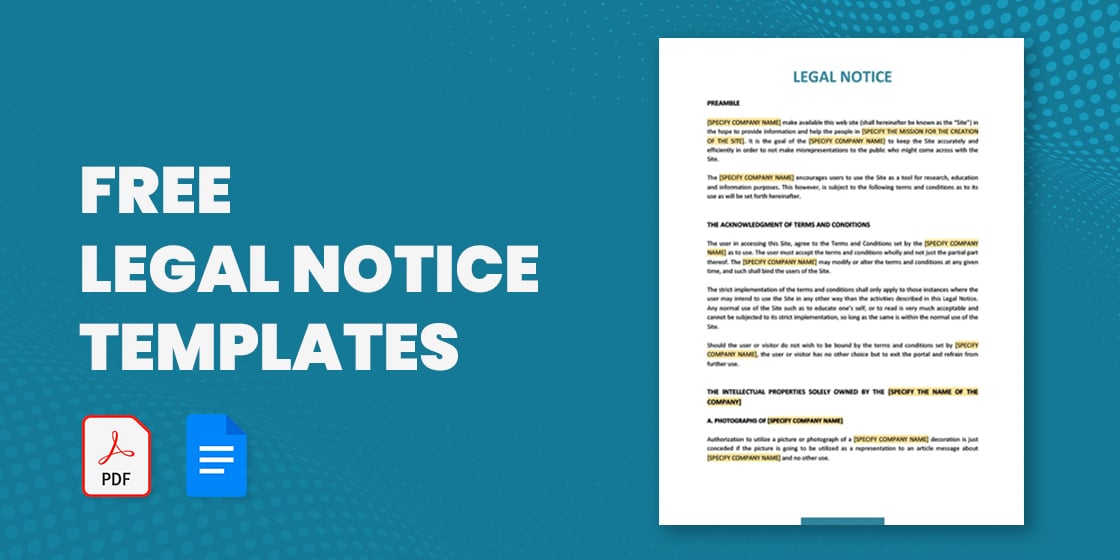
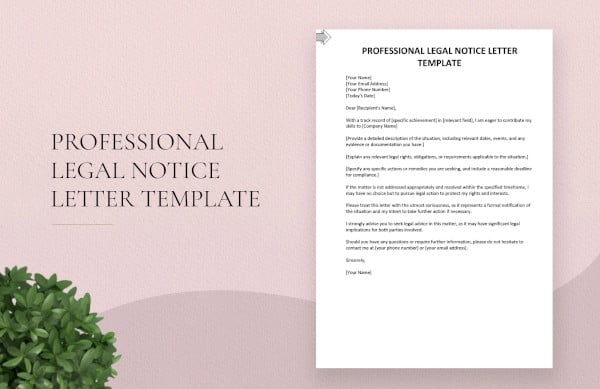
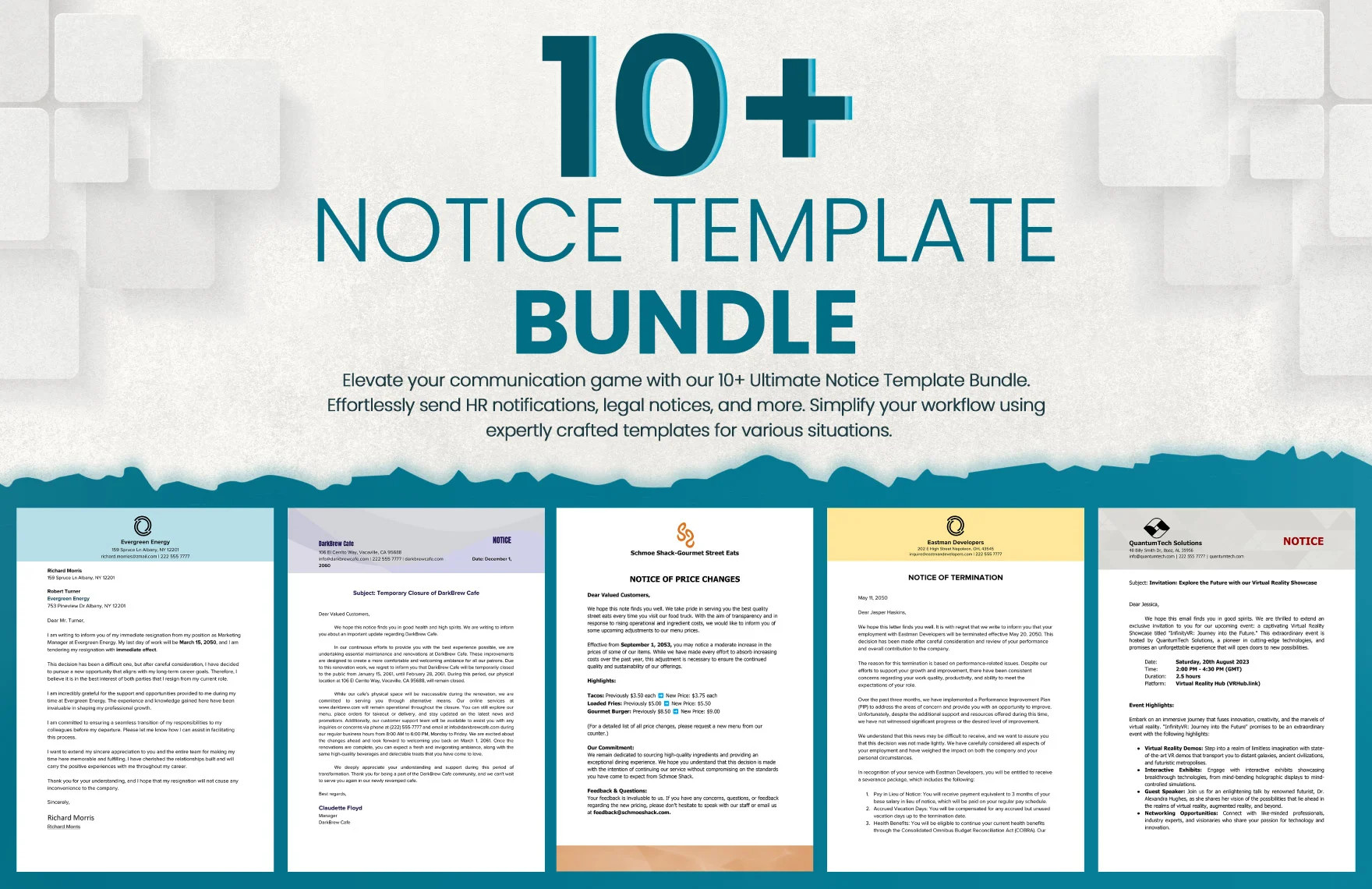
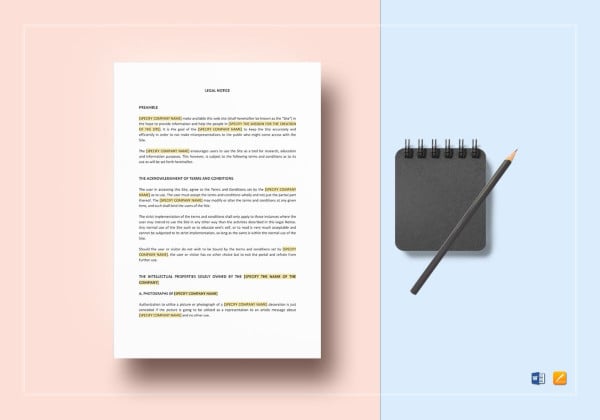
 beverlyma.gov
beverlyma.gov nobelprize.org
nobelprize.org justyoozit.com
justyoozit.com burgy.org
burgy.org steubencony.org
steubencony.org lawpandit.com
lawpandit.com oregon.gov
oregon.gov txcourts.gov
txcourts.gov salem.com
salem.com vakilsearch.com
vakilsearch.com




